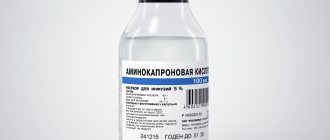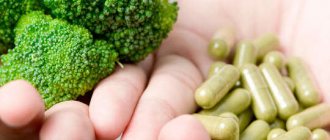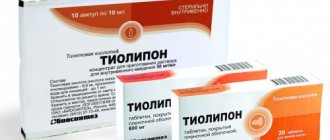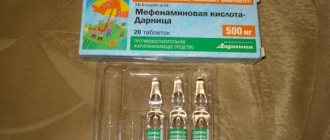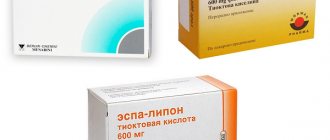Chemical properties
This chemical compound is a hydrophilic, non-cytotoxic bile acid, an epimer of chenodeoxycholic acid . Ursodeoxycholic acid is a not very aggressive bile acid, which is normally found in human bile and makes up about 1-5% of all bile acids found in the body. Molecular mass of the substance = 392.6 grams per mole. In appearance, it is a yellowish fine powder, which consists of crystals, and tastes bitter. The product dissolves well in ethanol and ice vinegar, and is practically insoluble in water. Available in the form of capsules for oral administration and suspension for children.
Why are bile acids needed?
Every day, the human body encounters a huge amount of foreign substances: they come from outside with food, drinks, air, etc. Some of them are useful and safe, some are potentially dangerous. The smart gastrointestinal tract knows absolutely exactly what will benefit a person and what will harm him. Those. The digestive system acts as a kind of face control. Good bacteria easily pass through, but bad bacteria are sent either out or for additional examination.
Additional examination is carried out by the same bile acids. Their main function (like saliva and gastric juice) is to protect the body from pathogens.
Bile acids are an “antibacterial” substance that the liver produces to fight parasites (among other things).
Primary bile acids are a highly toxic substance. To prevent them from injuring the cells of the body itself, the gastrointestinal tract carries out a transformation: from primary to secondary and tertiary. But even such “neutralized” acids can cause the development of the disease. For example, if for some reason bile stagnates in the liver (alcohol, poor diet, lack of physical activity, etc.), cholestatic hepatitis begins to develop.
Pharmacodynamics and pharmacokinetics
Ursodeoxycholic Acid has the ability to stabilize hepatocyte membranes, reduce the concentration of hydrophobic, toxic acids, and slow down the absorption of cholesterol in the intestine. The substance has a cytoprotective and hypocholesterolemic effect, slows down cell death from the effects of toxic fatty acids .
The drug is effective in the treatment of biliary reflux gastritis and reflux esophagitis, binds apolar bile acids . The substance has the ability to form double molecules that are well integrated into cell membranes and stabilize them; the cells become immune to the action of cytotoxic micelles. The drug promotes the dissolution of gallstones by shifting the concentration of cholesterol and gallstones, preventing the appearance of new stones. Toxic acids are quickly evacuated through the intestines with feces.
Ursodeoxycholic Acid normalizes the work of T-killers ( lymphocytes ), inhibits the expression of HLA antigens located on the membranes of hepatocytes . The drug slows down the development of fibrosis in primary biliary cirrhosis , cystic fibrosis or alcoholic steatohepatitis . The risk of developing varicose veins of the esophagus is reduced.
After oral administration, the drug undergoes absorption in the jejunum, where it undergoes passive diffusion. The maximum concentration of the product is observed within 1-3 hours. The compound has a high degree of binding to plasma proteins, about 70% in healthy patients. When taken systematically, the substance replaces about half of the total amount of bile acids in the blood.
In liver tissue, the drug binds to taurine and glycine , forming conjugates that are released into the systemic circulation. The therapeutic effect of taking the drug depends on the dosage. The substance crosses the placental barrier and is excreted in the feces. Less than 1% is excreted in urine.
Analogs and which one is better
Analogues of ursodeoxycholic acid also contain UDCA, and the difference lies in the name, release form and additional components included in the drug. If the pharmacy does not have the drug, then pharmacists can offer a person who presents a prescription in Latin for the purchase of ursodeoxycholic acid:
- Ursoprim;
- Exhol;
- Ursosan;
- Ursofalk.
None of these drugs is better or worse than others in terms of their therapeutic effect. However, there is an opinion that the tolerability of the Czech and German drugs is better.
Before replacing a drug with a similar product, you should familiarize yourself with how it will affect the body. Let's consider the comparative characteristics of drugs often prescribed instead of a drug sold under the trade name Ursodeoxycholic acid.
Ursodeoxycholic acid analogs
UDCA or Ursosan
At first glance, it is difficult to say which is better - Ursodeoxycholic acid or Ursosan. The medications have almost identical composition, but differ in price and manufacturer.
Ursosan is produced in the Czech Republic, and judging by the reviews of gastroenterologists, it is well tolerated and effective.
UDCA or Heptral
Medicines have different compositions and have different effects on liver cells.
- UDCA prevents bile stagnation, reduces the production of low-density cholesterol and has a positive effect on immunological reactions in the organ.
- Heptral is made on the basis of ademetionine, which reduces the toxicity of bile acids, has an antioxidant and regenerating effect, and reduces the risk of developing fibrosis.
When deciding which is better to choose - ursodeoxycholic acid or Heptral, you should keep in mind that the hepatoprotective properties of UDCA have been proven and clinically tested.
Indications for use
The medicine is prescribed:
- from cholesterol stones in the gall bladder and common bile duct if endoscopic and surgical treatment is impossible;
- for the elimination of cholesterol stones with a diameter of no more than 2 cm after mechanical or extracorporeal lithotripsy ;
- in the treatment of primary biliary cirrhosis ;
- for chronic hepatitis with cholestatic syndrome;
- patients with liver cystic fibrosis , acute hepatitis or congenital bile duct atresia
- for gastritis and reflux esophagitis ;
- for the treatment of biliary dyspeptic syndrome with dyskinesia or cholecystopathy ;
- as a prophylactic and for the treatment of cholestatic syndrome resulting from treatment with hormonal contraceptives;
- during treatment with cytostatics, with alcoholic liver damage;
- as part of complex treatment after liver and other organ transplantation.
Contraindications
- severe renal and/or liver failure;
- liver cirrhosis in the stage of decompensation;
- obstruction of the biliary tract;
- non-functioning gallbladder;
- infectious diseases of the liver, bile ducts and intestines in the acute stage;
- X-ray positive (high calcium concentration) gallstones;
- empyema of the gallbladder;
- acute cholangitis;
- acute cholecystitis;
- gall-gastric fistula;
- age of children under 3 years;
- hypersensitivity to any component of the drug.
The drug is prescribed with caution to children aged 3–4 years due to possible problems with swallowing capsules.
special instructions
To eliminate stones in the gall bladder with the help of Ursodeoxycholic Acid, it is necessary that the stones be cholesterol, no larger than 20 mm in size, the gallbladder retains its functions, so that half of the bladder remains free. Also, stones should not block the bile duct.
During acid therapy, it is recommended to check the activity of liver enzymes every 30 days for the first 3 months. transaminase activity is checked every 3 months.
When treating cholesterol stones, it is recommended to undergo ultrasound and x-ray examinations once every six months.
After the stones dissolve, it is recommended to take the medicine for several more months for prevention.
Instructions for use
There are no age restrictions for the use of this drug; if necessary, Ursodeoxycholic acid can be prescribed from the neonatal period. The dose is selected individually, depending on body weight and the severity of the disease. The average dose per day is up to 10 mg/kg, taken once in the evening. The duration of use and the number of courses of Ursodeoxycholic acid are determined by the doctor; they are different for different diseases. During treatment, determination of the level of liver enzymes is required once every 3 months, and when gallstones are dissolved, ultrasound and x-ray examination of the liver and biliary tract is required once every 6 months.
Preparations containing (Ursodeoxycholic Acid Analogues)
Level 4 ATC code matches:
Ursodex
Henofalk
Ursoliv
Ursofalk
Choludexan
Ursohol
Ursodez
Urdoxa
Ursosan
Livodex
There is a wide selection of Ursodeoxycholic Acid preparations. Preparations that contain medicine as the main active component: Ursosan , Ursodez , Urdoxa , Exchol , Grinterol , Ursodex , Ursorom Rompharm , Ursomik , Ursofalk , Livodexa , Ursoliv , Choludexan , Ursolite .
Release form and composition
Ursodeoxycholic acid is produced in the form of hard gelatin capsules of size No. 0 with a white body and cap; Inside the capsules there is a white powder (10 capsules in a blister pack, 1, 2, 3, 5 or 10 packs in a cardboard pack).
The composition of 1 capsule of the drug includes:
- active substance: ursodeoxycholic acid – 250 mg;
- auxiliary components: magnesium stearate – 0.6 mg, anhydrous colloidal silicon dioxide – 1.6 mg, corn starch – 72.8 mg.
The capsule shell contains: gelatin – 94.08 mg, titanium dioxide (E171) – 1.92 mg.
Reviews
For medicinal dissolution of cholesterol stones in the gall bladder, preparations of chenodeoxycholic or ursodeoxycholic acids are used. The latter is considered safer and more effective. Due to the fact that for a successful outcome of therapy it is necessary that a number of conditions be met, a favorable outcome is observed in approximately 15% of patients. In this case, treatment must be carried out under the supervision of a doctor, the patient must comply with all his instructions, adhere to a diet and not drink alcohol. The duration of treatment usually ranges from six months to 2 years, which also reduces the likelihood of a lasting result.
Some reviews about Ursodeoxycholic Acid:
- “... The doctor prescribed it, I took the medicine for 3 months, it seems that the results have already begun to appear, but I began to suffer from biliary colic. The treatment had to be interrupted”;
- “... Acid was prescribed to my child for jaundice. I gave it to him, in the dosage as the doctor said. Within 3 months. Now the child is healthy”;
- “... I took the medicine for a very long time, about a year, and had high bilirubin. Now the tests are normal. True, at first I was tormented by a problem with stool, sometimes diarrhea, sometimes diarrhea”;
- “... This medicine did not help me. Everything remained in its place, only I felt a little nauseous after taking the capsules. In short, we decided to treat gallstones surgically.”
Use during pregnancy and lactation
During pregnancy, UDCA should not be used, except in cases where the expected benefit to the woman significantly outweighs the possible threat to the fetus. Information on the use of the drug in pregnant women is extremely limited.
Animal studies have revealed the reproductive toxicity of UDCA in early pregnancy. Its effect on animal fertility was not detected in these studies. There are no data on the possible effects of therapy on fertility in humans.
Before starting to take Ursodeoxycholic acid-VERTEX, it is necessary to exclude possible pregnancy.
Treatment with the drug in women of reproductive age is allowed only if they use reliable contraceptives. It is recommended to use non-hormonal contraceptives or oral contraceptives with low estrogen content. However, if the drug is prescribed to dissolve stones in the gallbladder, it is necessary to resort to the use of adequate non-hormonal contraceptives, since hormonal oral contraceptives can increase the formation of gallstones.
The level of UDCA in human breast milk has been reported to be very low in several documented cases. As a result, adverse events are not expected to occur in breastfed infants.
Drug interactions
- cyclosporine: there is a change in the absorption of this substance from the intestine; with this combination, it is necessary to monitor the plasma concentration of cyclosporine and adjust its dose if necessary;
- colestipol, cholestyramine, antacids containing aluminum hydroxide or aluminum oxide (smectite): reduce the absorption of UDCA in the intestine, which causes a decrease in its absorption and effectiveness; when using UDCA in combination with drugs containing at least one of these substances, an interval of at least 2 hours must be maintained between their doses;
- ciprofloxacin: UDCA reduces the absorption of this substance;
- rosuvastatin (20 mg/day): a slight increase in its plasma level in the blood is possible when combined with UDCA at a dose of 500 mg/day;
- nitrendipine: a decrease in its maximum plasma concentration and the area under the pharmacokinetic curve is recorded; if combination with UDCA is necessary, the content of nitrendipine in plasma should be monitored and, if necessary, its dose should be increased;
- clofibrate and other drugs that lower the concentration of cholesterol in the blood, estrogen hormones: there is an increase in the secretion of cholesterol in the liver and increased formation of gallstones, which significantly reduces the effect of UDCA aimed at dissolving the latter;
- dapsone: its therapeutic effect may be weakened.


